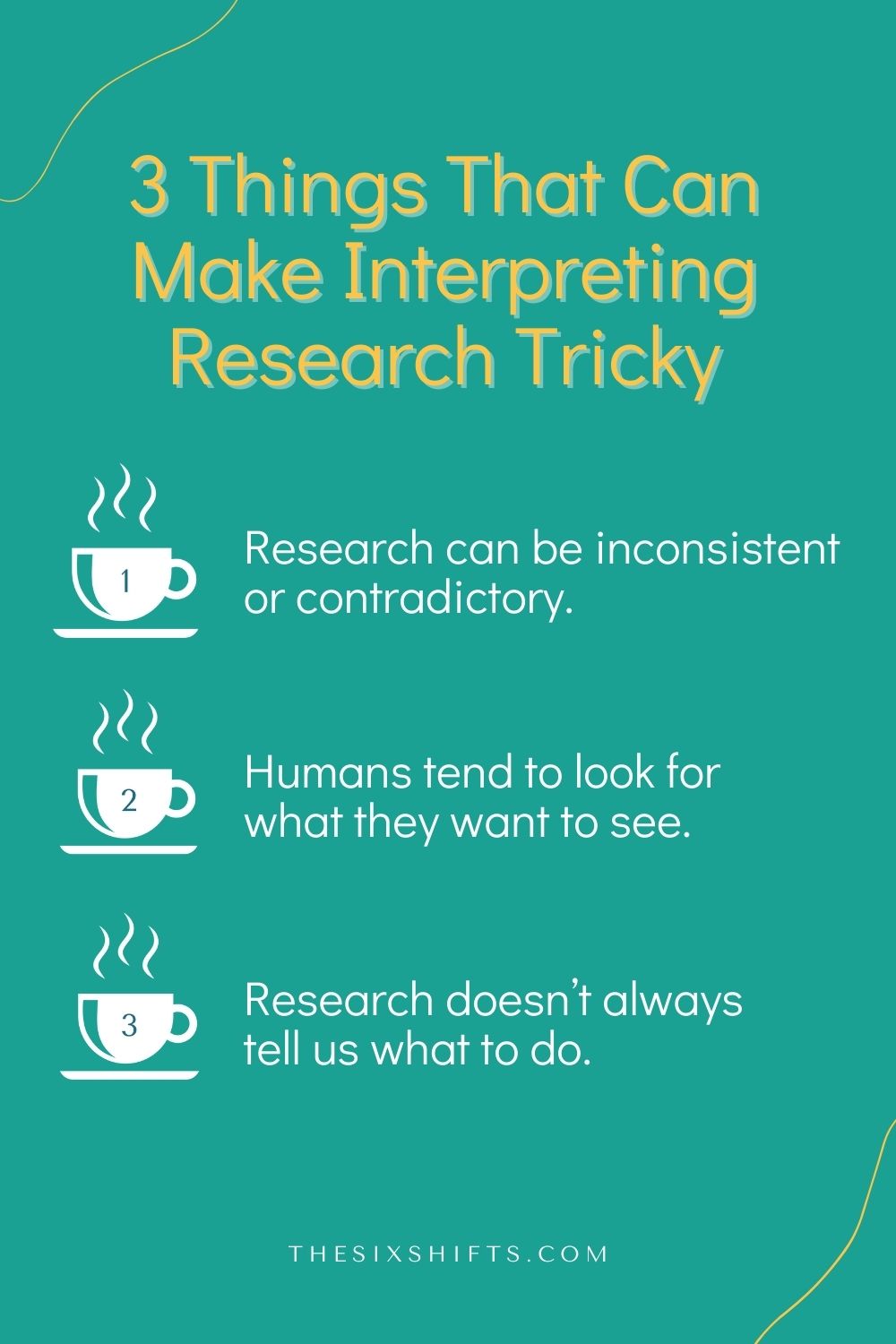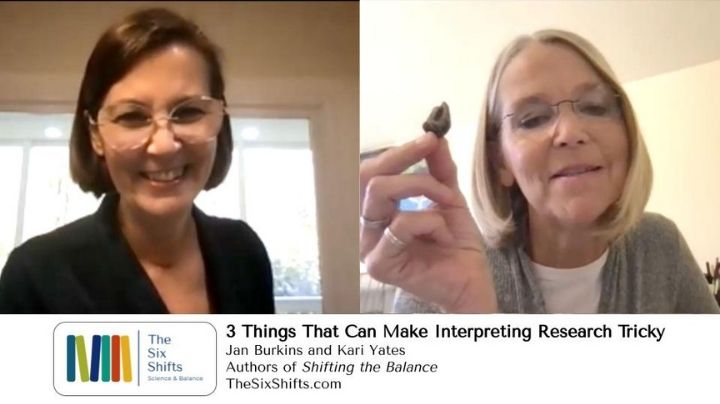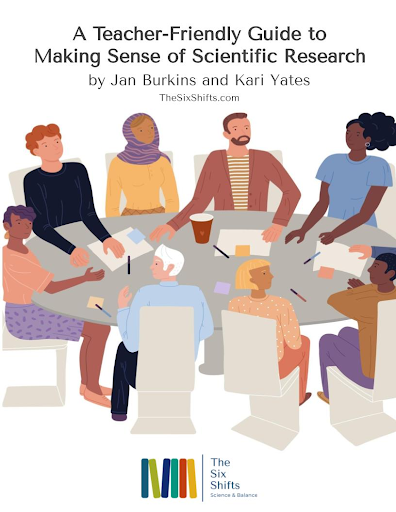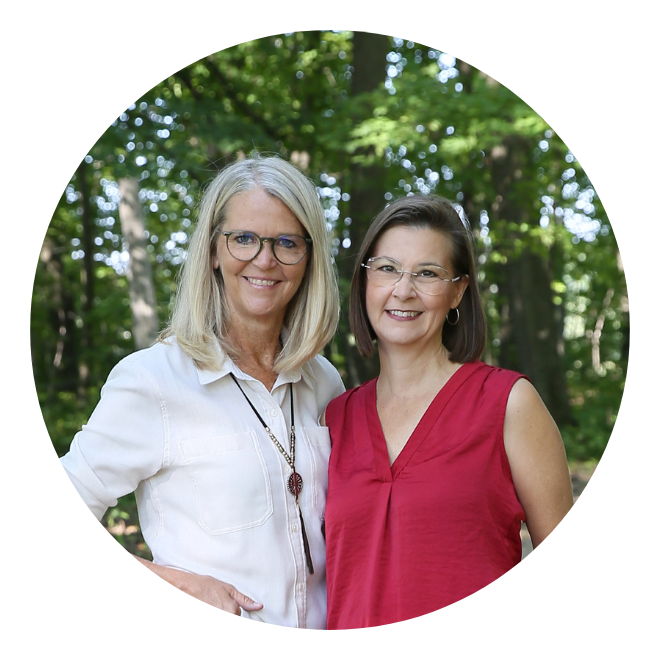Perhaps you are thinking about that second (or third or fourth) cup of coffee you have in the morning. Maybe you are wondering if coffee is really good for you after all. So, you decide to get on the internet and do a bit of reading to find out what the research REALLY says about drinking coffee.

It seems straightforward, right? The research should clearly tell us whether to drink coffee or switch to matcha.
But, it’s not that simple. Reading and understanding research brings with it a few complications. In this blog, we share three things that commonly interfere with research-based decision-making. And we have a video to go along with it!
 Research can be inconsistent or contradictory.
Research can be inconsistent or contradictory.
In doing your research on coffee, you might be happy to hear that coffee could extend your life by reducing cancer or heart disease (Oh, yeah!) (O’Keef et al., 2018).
But, on the other hand, it may disappoint you to learn that it can diminish your concentration, give you the jitters, and disrupt your circadian rhythms (Oh, no!) (Wikoff 2017).
So, how do we decide what to do? Should we drink that cup of coffee or not?
Ultimately, we want to look for patterns in the research. We want to see if findings are replicated. We want to know the most common scientific outcomes. Studies of studies, referred to as meta-analyses, can help us synthesize a lot of results about coffee (or reading instruction) and make sense of them.
 Humans tend to look for what they want to see.
Humans tend to look for what they want to see.
When faced with contradictory results, it’s easiest to focus on the research that supports what we already believe. This dangerous phenomenon, known as confirmation bias, causes us not only to look for evidence that supports what we already believe, but also to overlook or dismiss ideas that contradict our existing beliefs or ideas.
Basically, when it comes to research, we often tend to find (even set out to find) what we are looking for. If you are a coffee drinker, for example, confirmation bias will likely lead you to collect and share the positive findings about coffee, while ignoring or talking yourself out of believing negative findings.
Confirmation bias is simply part of human nature. We all are prone to it. But once you know about it, you can guard against it. So, whether the research is about coffee, exercise, or phonemic awareness instruction, it’s important to consider the ideas that create a bit of cognitive dissonance so that you can question what you already believe.
 Research doesn’t always tell us what to do
Research doesn’t always tell us what to do
Translating research into action can be tricky. Maybe the subjects in the coffee study you are considering drank their coffee at 9:00 a.m., while you usually drink your coffee at 6:00 a.m.
And what if you add cream? Almond milk? Sit outside instead of at the kitchen table?
These variations get even more complex when you are talking about how humans learn! So the work of translating the science into action is often nuanced and requires us to fill in some gaps based on our experience or judgment.
This is especially true for teaching children to read! Think about how different children are, and even how different schools and classrooms are.
If instructional decisions based on research were absolutely black-and-white, there wouldn’t be so much controversy about how to teach children to read.
But fortunately, there is enough research on the reading brain and how to make reading easier for children that you can make some really strong instructional decisions for children. That’s why we wrote Shifting the Balance.

If you would like to learn more about how to make sense of reading research, we’ve put together a little book for you, A Teacher-Friendly Guide to Making Sense of Scientific Research.
It’s available for free in ebook format or as a downloadable PDF.
(Jan likes to print a PDF so she can mark it up as she goes.😊 Kari likes to save a bit of ink and the sound of the virtual pages turning. 😊 )
You can choose the format that you like best. Happy reading!




Trackbacks/Pingbacks